The future of food in 2022: New fusion, extreme low waste, drone deliveries, exotic mushrooms and more
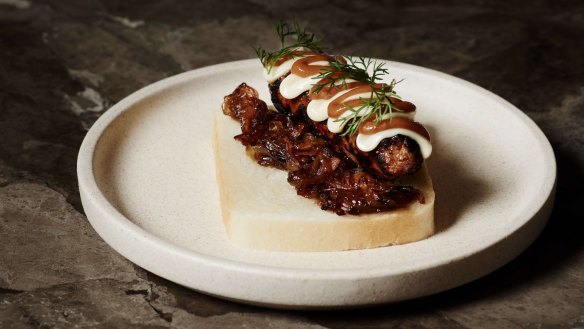
Trend forecasting, tenuous in the dullest of years, is a special type of masochism today. Predicting anything – the weather an hour from now, the likelihood of the butcher being open, whether it's cooler to eat shokupan or sourdough (actually Parker House rolls are the thing) – is a fool's errand.
At the same time, the pandemic has stripped away so much of the fluff from dining that new directions in ingredient use, cooking and restaurant experiences are revealed in sharp relief. And because these changes have sprung from the reflection and grace that's necessary in difficult times, the key moves of 2022 are perhaps deeper and more profound than mere trends.
They're rethinks and potentially long-term shifts that will make cooking at home and eating out better, richer and more connected for all of us.
Extreme low waste
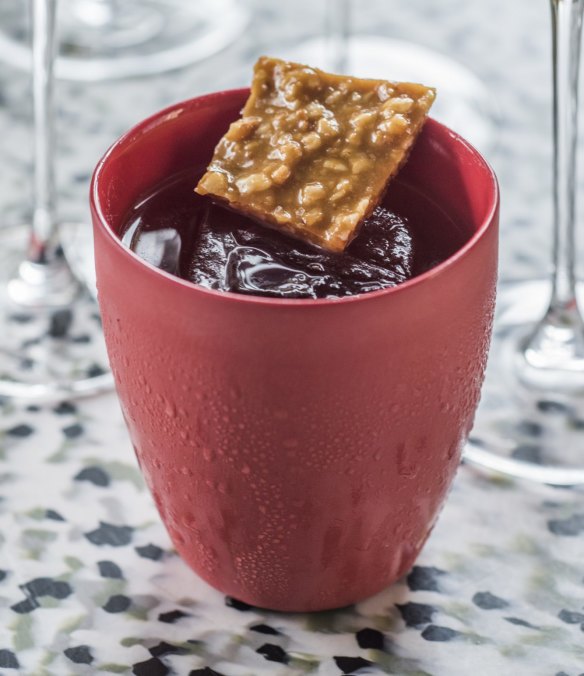
It's not enough to make carrot top pesto anymore. The increasing cost of food, the shakiness of supply chains and a desire to avert climate crisis will drive chefs to extreme efforts to reduce food waste. It's good business, great messaging and chefs are also finding that it's a spur for creativity.
Frontrunners include Sydney bar Re, which collects surplus food and spent ingredients like coffee chaff, mango stones and beetroot peel then turns them into food and cocktails (pictured, right).
A couple of years ago, 'fusion restaurant' would have had a negative connotation. I think now we are redefining fusion.Jack Tsai, Mongkok Tea House
Nothing hits the bin at outer Melbourne restaurant O.My, which grows all its own vegetables and preserves excess and trimmings.
At Fish Butchery Waterloo, Josh and Julie Niland's new Sydney fish shop pushes whole beast eats in preparations like kingfish and smoked scallop mortadella, taking fish trim and cod fat to make low-fi but luxurious seafood charcuterie.
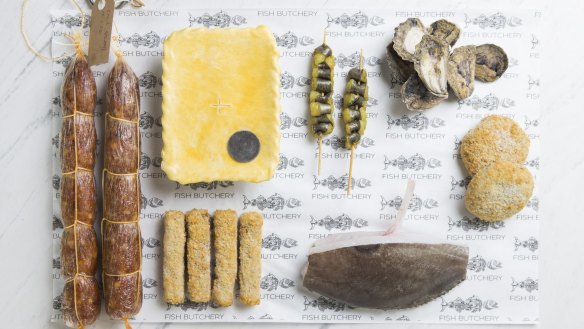
Chefs rethinking waste will spark wider change in the community. At Hearth by Moonacres in Bowral, chef Sabine Spindler runs Waste Not Tuesday, the apotheosis of a frugal ethic. Her one-dish lunch menu is designed around excess, imperfect produce and items that simply need to be used.
"A supplier gave us some eggplant seconds," says Spindler. "We grilled them and served them with chermoula paste made from kale stems and parsley that was starting to shoot, plus yoghurt made from leftover coffee machine frothed milk."
It's a showcase for customers, a practical way to avoid binning anything and, as it's turned out, a spur for new ideas. "Limitation can actually be an amazing challenge to be creative," says Spindler.
At Osteria Ilaria in Melbourne, pastry chef Lucy Whitlow recently made a mind-bending dessert inspired by potato skins left from making gnocchi.
"I roasted the skins then made them into a gelato, then put it inside a wattleseed choux bun with caramelised white chocolate," she says. "I dried out the top part of the bun and turned it into 'dirt' and rolled the dessert in it so it looks like a potato."
It's about being smart with ingredients and revelling in the creative process. "Some people still wonder why they might pay for food that you could have put in the bin," says Whitlow. "But others get it."
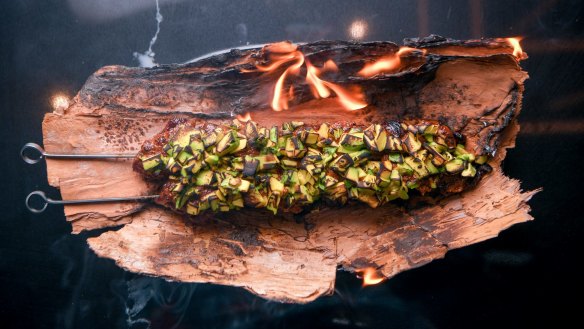
Fusion is fine now
The icky connotations of "fusion cuisine" – think monstrous mash-ups like sushi burgers or curry risotto – will be overwritten by an increasingly confident and questing intertwining of multiple cultures and influences with thrilling, thought-provoking and (crucially) tasty results.
At Mongkok Tea House in Camberwell, chef Jack Tsai melds Hong Kong-style cha chaan teng cafe food – itself a Cantonese spin on Western dishes like sandwiches – with Australia 2022.
The result is dishes like his drunken kingfish (a play on classic wine-steeped drunken chicken) and a pineapple bun (usually a fluffy white roll with crackle topping) made with buttermilk sourdough and served with rich char siu butter.
"A couple of years ago, 'fusion restaurant' would have had a negative connotation," he says. "I think now we are redefining fusion."
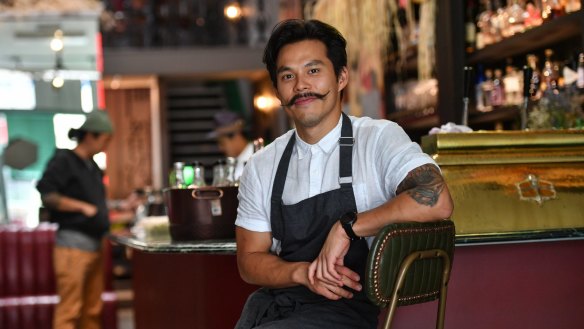
Tsai was born in Taiwan and grew up in Canada before moving to Australia. "My pizza at home was white toast with ketchup – fusion is something else now," he says. "It's about having the experience of different cultures and the confidence to make sense of it. We're not trying to be traditional. It's a new idea of what's modern."
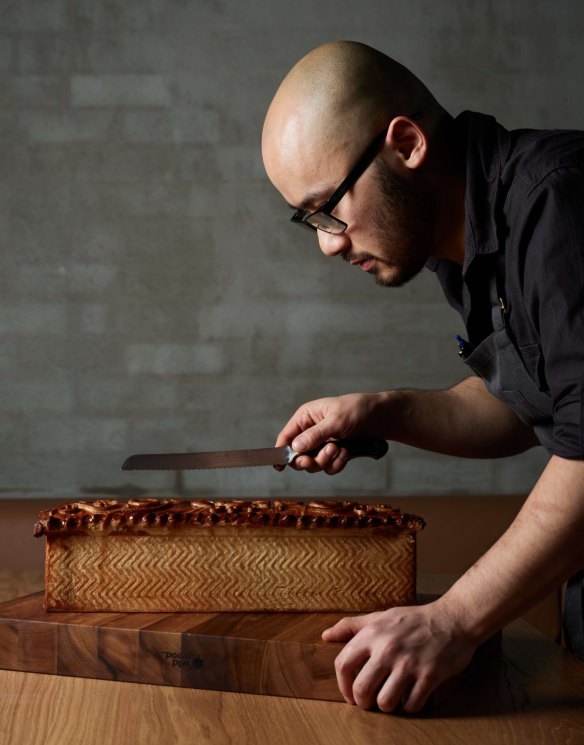
Chef Esca Khoo at Melbourne newcomer Miss Mi weaves Asian and Australian concepts in dishes like a kangaroo skewer glazed with Vegemite.
At Aru, which opened in Melbourne's CBD in 2021, chef Khanh Nguyen turned a lockdown special banh mi pâté en croute (pictured, right), into an "it dish" menu staple. It's both post-colonial reclamation and enjoyable slab of deliciousness.
At Merivale Group's newie MuMu, in Sydney's CBD, chef Oliver Hua reinterprets some south-east Asian dishes – see the wok-fried king prawns with fish sauce and brown butter, and calamari with sambal and Lebanese toum.
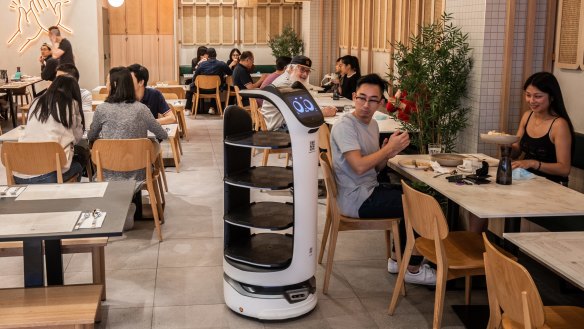
Technology
At the start of the pandemic hospitality businesses scrambled to add COVID-friendly online portals to avowedly bricks-and-mortar operations. As we come out the other side, we'll see a continued willingness to explore tech innovations.
Robots will do more cooking and serving – they're already alleviating staff shortages by running orders at Kata Kita in Melbourne and Matterhorn Swiss in Turramurra. Takeaway will become increasingly aerial: fast-service Vietnamese chain Roll'd has piloted drone delivery (pictured) in Canberra and Brisbane.
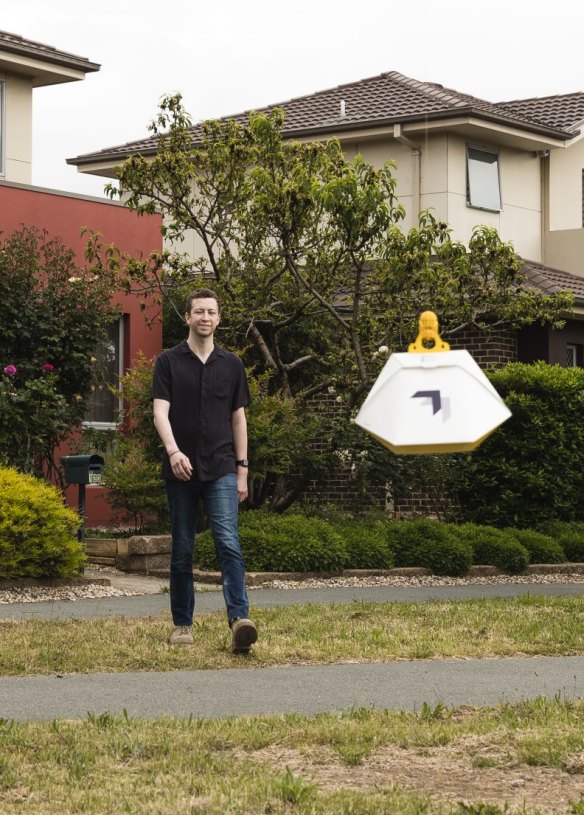
The normalisation of QR codes means they'll be increasingly common for ordering and paying but other uses will swing in, too, such as augmented reality menus.
Wondering about the Gruner Veltliner? Point your phone at the wine list to see a vineyard video chat with the winemaker. Love the bottle? Click to buy.
Expect NFTs and dining to bump up against each other, too. "Non-fungible tokens" (or unique, tradeable, traceable digital items) will move beyond novelty art items and act more like tickets. In New York, NFT memberships for yet-to-open Flyfish Club have traded for more than $20,000.
Sydney chef Dan Hong is driven by both curiosity and uncertainty as he plans to host a series of NFT events starting in April, minting 40 NFTs that will act as tickets to private dinners in waterfront homes.
"I'm not a big NFT geek but I'm open to opportunities," he says. "I think it's interesting to be at the early stage of collaboration between NFTs and the culinary world and with everything that's happened in the last couple of years I don't want to put all my eggs in one basket.
"I'm not saying I totally get it but I'm into seeing where it goes."
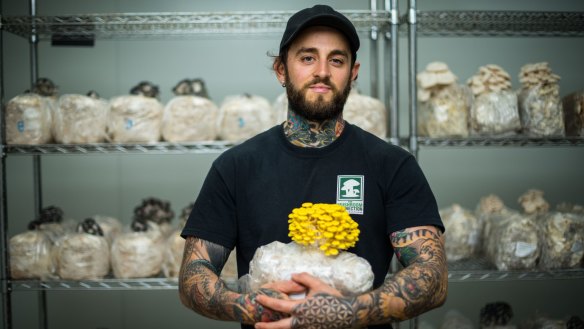
Mushrooms
Urban growers, the rise of vegan eating and purported health benefits will all contribute to a mushroom surge.
"People are thinking about mushrooms in a different way," says Buttons, founder of The Mushroomery in Melbourne's Alphington.
"There's more urban mushroom farming and more interest in how food is grown, partly because of a pandemic-induced awareness of supply chains. People realised there are only a certain amount of days 'til we could run out of food in our supermarkets."
Buttons produces 60 to 100 kilograms of oyster mushrooms a week in four shipping containers.
"Mushroom farming is something you can do anywhere you can get power and water," she says. "You don't need full sun. You don't need heaps of space."
She sells at farmers' markets and directly to chefs. "Oyster mushrooms in supermarkets are old," says Buttons. "Ours are sold the same day they're picked: they are more tender and juicy, they're not mushy. They are so much better than what people are used to."
There's also fresh culinary interest in multiple seasonal varieties, including yellow and pink tropical oyster mushrooms. "People think of them for stir-fries but you can also roast them, put them in risotto or on pizza, pickle them, make mushroom pâté," she says.
Five years ago, there were only a handful of exotic mushroom growers in Australia, among them Jason Crosbie, from The Mushroom Connection in Ballarat. It is now estimated there are about 70 nationwide.
"During lockdown, it seems everyone learned how to grow mushrooms," Crosbie says.
He produces a range of fungi such as blue oysters, king brown, shiitake, enoki and lion's mane, harvesting about 80 kilograms a week for restaurants and food stores.
Joel Orchard, from Young Farmers Connect, is another small grower. His not-for-profit business mentors young people in sustainable agriculture in the Northern Rivers region of NSW.
"Exotic mushroom farming allows young people to enter farming without the extraordinary capital involved in buying land," says Orchard. "With $20,000 you can set up a farm, and within 12 months you can have an income equivalent to one wage."
Orchard's own mushroom farm is housed in the garage of his rented property in Lismore. He sells to local retailers and restaurants, including Three Blue Ducks in Byron Bay.
He says that mushroom growers, like their product, tend to form clusters. In this case, the clusters are in and around the urban areas of Sydney, Melbourne, Brisbane and the Northern Rivers.
Seeds are the new nuts
Edible seeds will appear in more dishes as chefs seek flavour, texture, novelty and flexibility as well as tapping into potential health benefits of seed consumption.
Expect to see seeds sprouted, ground, fermented, blended with spices as well as simply scattered.
Pumpkin, hemp and sunflower will be most popular but Australian chefs will also go beyond wattle seeds to explore other natives such as kurrajong.
Closer ties with the land and plant life cycles will be a driver of increased seed use.
"Everything starts from seeds," says chef Bodee Price from Brown Brothers restaurant in northern Victoria. "I continue to find it fascinating that a tiny seed can turn into a big plant."
The restaurant picks from a large kitchen garden each day and watching plants grow from seedlings into runaway bolters is constantly inspiring.
"We've been having a lot of fun with coriander seeds recently," he says. "I've always liked the flavour but it can be overpowering so mostly we grow coriander for its flowers. Before the berries dry into seeds, we're salting them, treating them like capers."
The coriander "capers" are part of a king salmon dish with last summer's fermented chillies, new season cucamelons and avocado. "You get a really salty, crunchy but floral hit of coriander," says Price.
There are other seedy flavour bombs, too. "We've made a pumpkin seed miso that I blend with juice made from oranges grown next door," says Price. "We put it on grilled corn and finish it with finger lime and parmesan."
A sunflower seed miso is also on the go. "We grow the koji (rice mould), smoke it and blitz it up with sunflower seeds. It's going to be amazing with vegetable dishes, bringing meatiness but entirely vegan."
Same-side-ism
So many of the traditional arts of hospitality are about hiding the machinery of a restaurant and the hard graft that makes smooth, shiny dining experiences possible.
The pandemic has stripped away this veneer and we'll continue to see more restaurant workers and owners express the pain, anger and frustration they would normally only share at knock-off drinks with co-workers or in WhatsApp industry groups.
We've already seen hospitality businesses asking customers to be kind, patient and understanding. They've explained staffing challenges.
Some, like Melbourne's Tuck Shop Take Away, have shared the hurtful impact of online abuse. Others, like Fix Wine Bar's Stuart Knox, have spoken of the pain while pleading for government financial support during the Omicron wave.
It's a new way of welcoming diners, not just into restaurants, but into some of the hard truths of hospitality.
"Putting on a happy face hasn't always been possible for me this year," says Sydney-based Knox. "Our job is to keep everyone happy so we have tended to hide the realities from customers. We don't want them to see the tough side of it.
"But COVID brought it to a head. People might as well know the truth."
Restaurant reviews, news and the hottest openings served to your inbox.
Sign up